A wild storm blows in but clears up quickly. You decide to saddle up for a relaxing trail ride with your buddies. You all ride willing, well-trained trail horses. You fall into a lively conversation as you lead your friends down the trail. You hardly notice when your horse decides to walk around a puddle, rather than go through it. The other horses follow suit.
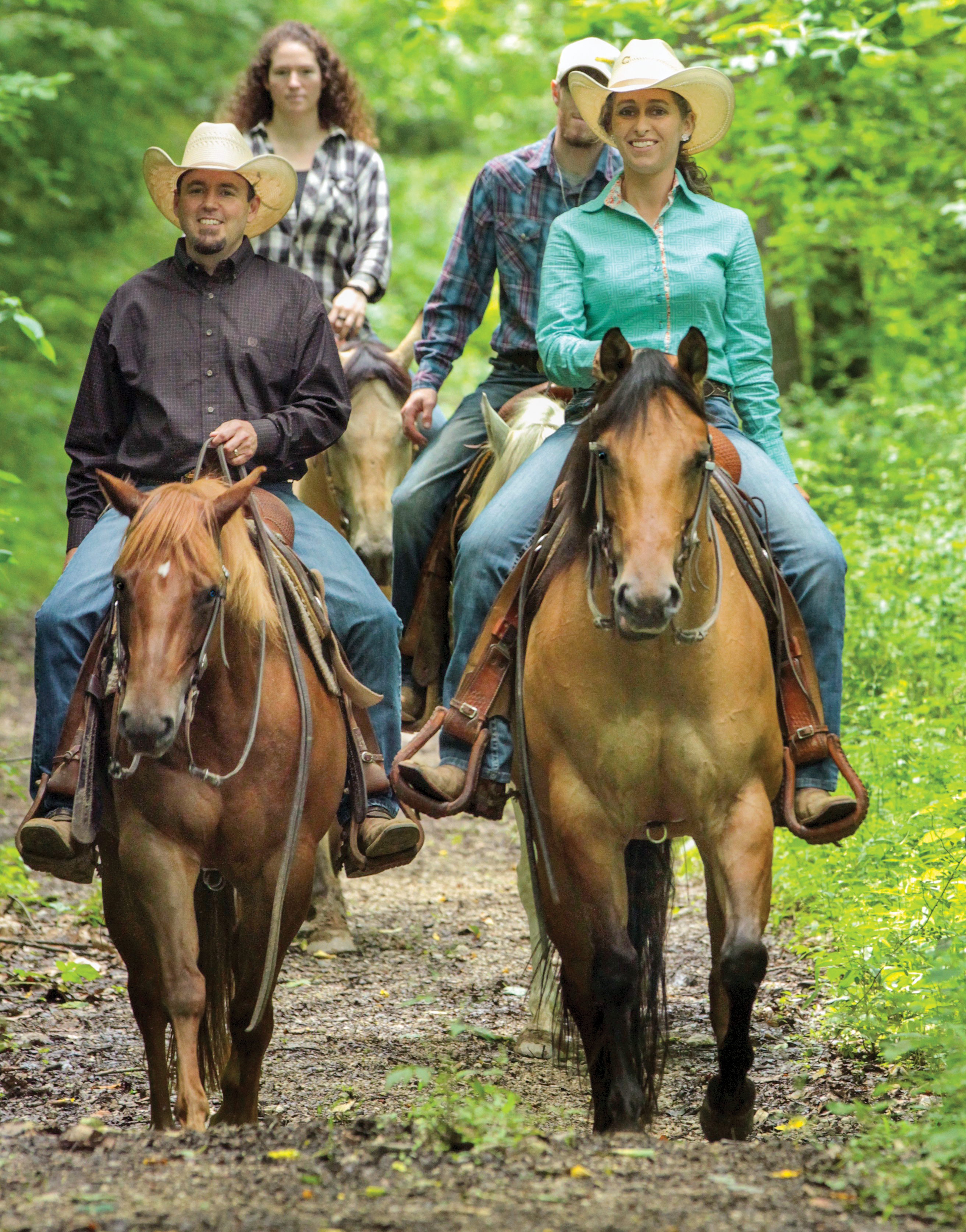
Tanya Corzatt
You continue along the trail, still talking with your trail buddies. You approach a small fallen log blown across the trail by the storm. Your horse knows this trail but the fallen log is new to him. You gather the reins and ask him to step across it. Instead, he turns away, tosses his head, and fights your rein pressure. You fight to keep him moving forward, pointed toward the log. Your ride has gone from relaxing to stressful for the whole group. What happened to your usually willing trail partner?
Here, I’ll first help you understand how “holes” (such as this seemingly sudden disobedience) can develop in your horse’s training. Then I’ll explain how to avoid creating these holes by being consistent, being aware, and giving clear cues. Finally, I’ll give you an easy shoulder-control exercise to get your horse back on track, listening to your every cue.
Creating ‘Holes’
I often hear this complaint: “My once-perfect trail horse was doing great on our weekly rides, but ‘suddenly’ won’t go where I want.” The horse’s disobedient behavior most likely escalated over time, but was allowed or unnoticed—until the problem grew out of control.
Even the best-trained horse can become “untrained” if he’s allowed to choose his own path too often. In the early stages of the problem, you might’ve pointed your reins to cue your horse to walk straight through a puddle. Instead of taking your cues, he chose to walk around. You thought he made an understandable decision to stay out of the mud, and you didn’t correct him. You relinquished your authority, and he claimed a bit of independence. The hole in his training begins with this seemingly benign snag. Over time, he’ll gain more and more control.
When your horse no longer thinks he needs to check in with you for direction about where to place his feet, it creates a “hole” in his training. Even if he was once trained to step where directed, you’re teaching him that you’ll allow him to take charge. Without consistent reinforcement and corrections, he can learn that he doesn’t have to respond to your cues.
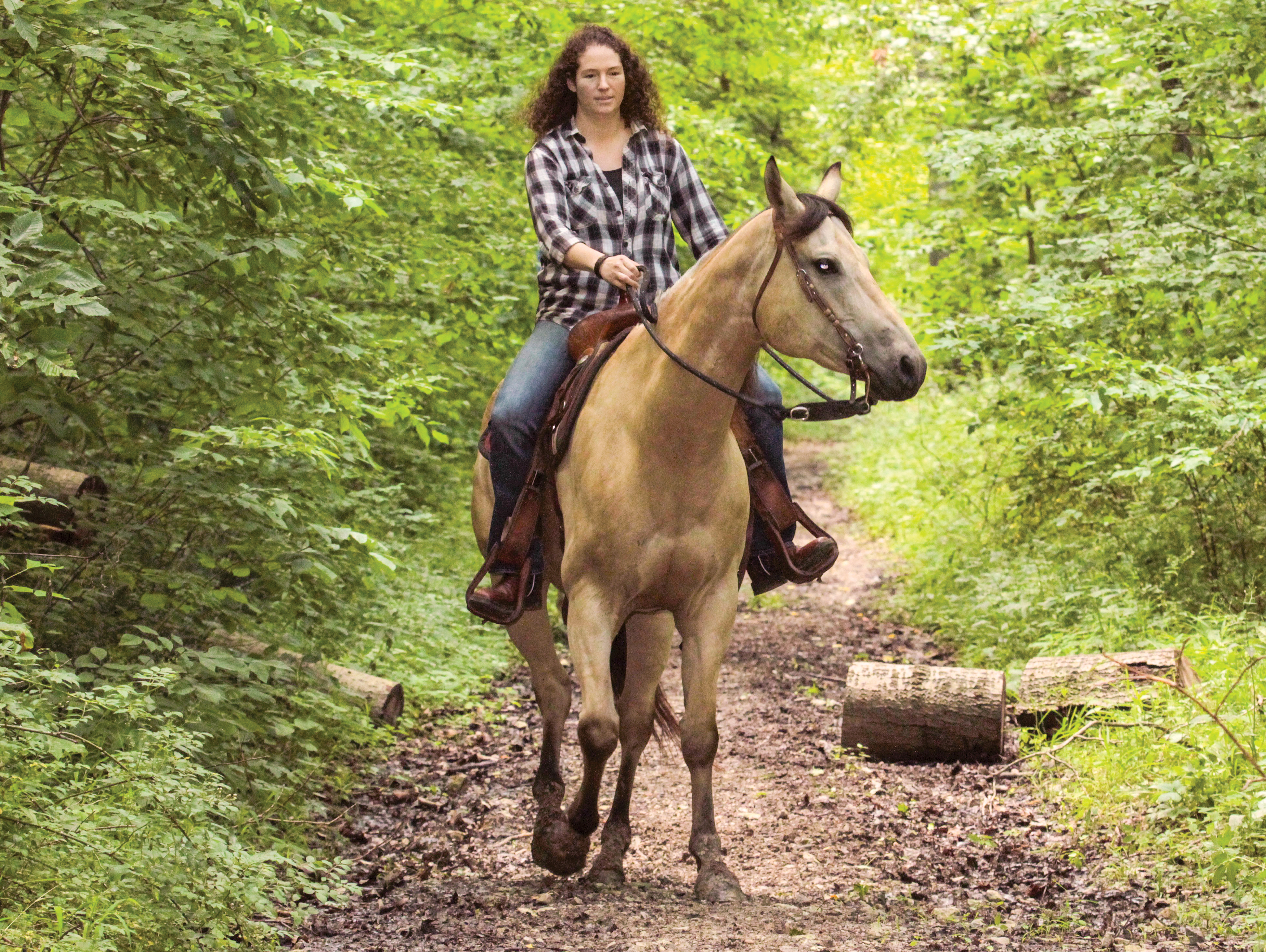
Tanya Corzatt
In fact, your horse will eventually start to resent your cues, which can quickly lead to balking. By balking, I mean that he’ll turn in the direction he wants to go—not necessarily bolting, but making his choice of direction known. He’ll toss his head in defiance and turn away, because he doesn’t agree with your choice and thinks he should choose the path.
To avoid creating such holes in your horse’s training, be aware of your horsemanship, give clear cues, and consistently reinforce every cue you give to him—or give him an explicit cue to let him know that you’re giving him permission to use his own judgment.
Be Aware
Trail riding with friends can be distracting. It’s easy to relax and talk while on the trail—and allow your horse to follow the path or horse in front of him without offering your input about direction and speed. Riding in a relaxed fashion isn’t all bad. But you should stay focused on his training. Be aware of any sign of disobedience when you give him a cue.
Pay attention to how often you give in to your horse’s will. Would you allow your child to manipulate you the same way? Imagine telling your child that you won’t buy candy as you enter a store, but she puts a chocolate bar in your basket anyway. When you say no, she proceeds to cry and roll on the floor. If you give in, you know you’ll teach her she can get her own way any time she throws a fit.
There are times you can treat your child to candy, but you must be careful not to reward unacceptable behavior. The same concept is true for you and your horse. There are times you want him to pick the path, but not after you’ve given a clear directive.
For instance, if you cue him forward over a log, and it appears he can do so safely, he should move forward willingly. Don’t allow him to step to the side or circle back to find a way around. If you do, you’re creating a hole in his training that’ll get bigger over time.
Give Clear Cues
Training a horse for the trail differs from riding only in an arena on good footing. On challenging terrain, you sometimes want your horse to use his own judgment to pick the best path. And on steep, downhill trails, you sometimes need to give him his head for balance and so he can pick his way down the hill on the surest footing. You can and should allow your horse to help choose his footing over loose rocks that will put him at risk for a slip and in other dicey circumstances. He’ll appreciate your trust in him to choose the safest way through.
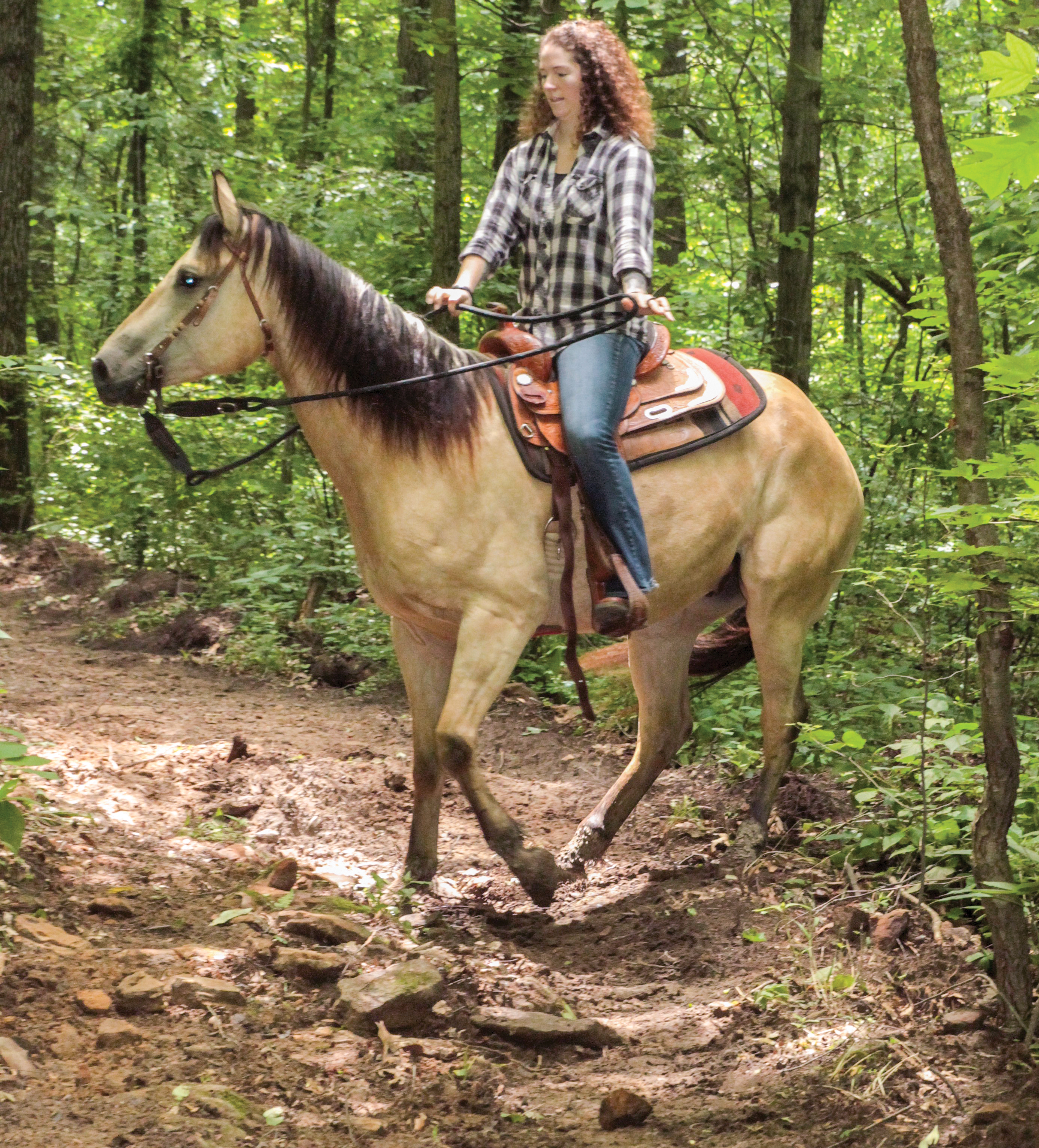
Tanya Corzatt
Stay attuned to your trail horse. Keep an eye on his ears and body language, and tune in to his tension level even as you talk to your friends or grab a snack from the saddlebag. Pay attention if he tenses up or reacts to a trail obstacle with suspicion. He might see or sense a danger you do not, such as a rattlesnake in the rocks or water that’s deeper than it appears.
You may occasionally allow your horse to choose a different path if you agree that there’s a safety concern, but be mindful of how often you allow this to happen. Know that there’s still a big difference between purposefully giving your horse permission to choose the path and allowing him to make a move that goes against your request. If there’s no safety reason that he should step differently, make sure he follows through with your command.
When you do decide to give your horse permission to use his own judgment, you still need to remain in charge. To make this distinction, develop a clear cue to communicate to him that you’re explicitly giving him permission to choose the path. One good cue is to deliberately put your rein hand (or hands) on his neck while giving him his head on a loose rein.
Gain Shoulder Control
When your horse balks at an obstacle, your first reaction might be to steer his head back toward it. But with this move, he still has control. You’ve turned his head to the left, but he wants to go to the right. He pulls his shoulders to the right and can move to the right—no matter where you point his nose. You continue to pull on the reins and feel as though you’re in a tug-of-war.
To get out of the fight and correctly control a balk, you must have control of your horse’s entire body. You need to be able to control his forward motion and his shoulders. When he knows that you can control his shoulders—and you remind him of this fact with frequent practice—he’ll be less likely to struggle with you and more willing to pay attention to your on-trail cues.
Here, I’ll give you a spiral-in, spiral-out exercise to gain shoulder control. You’ll develop rein aids that’ll help you direct your horse’s nose and shoulders, so he won’t be able to easily balk at a trail obstacle.
You’ll first master this exercise in an arena; the controlled environment offers good footing and fewer distractions. Then you’ll head out on the trail.
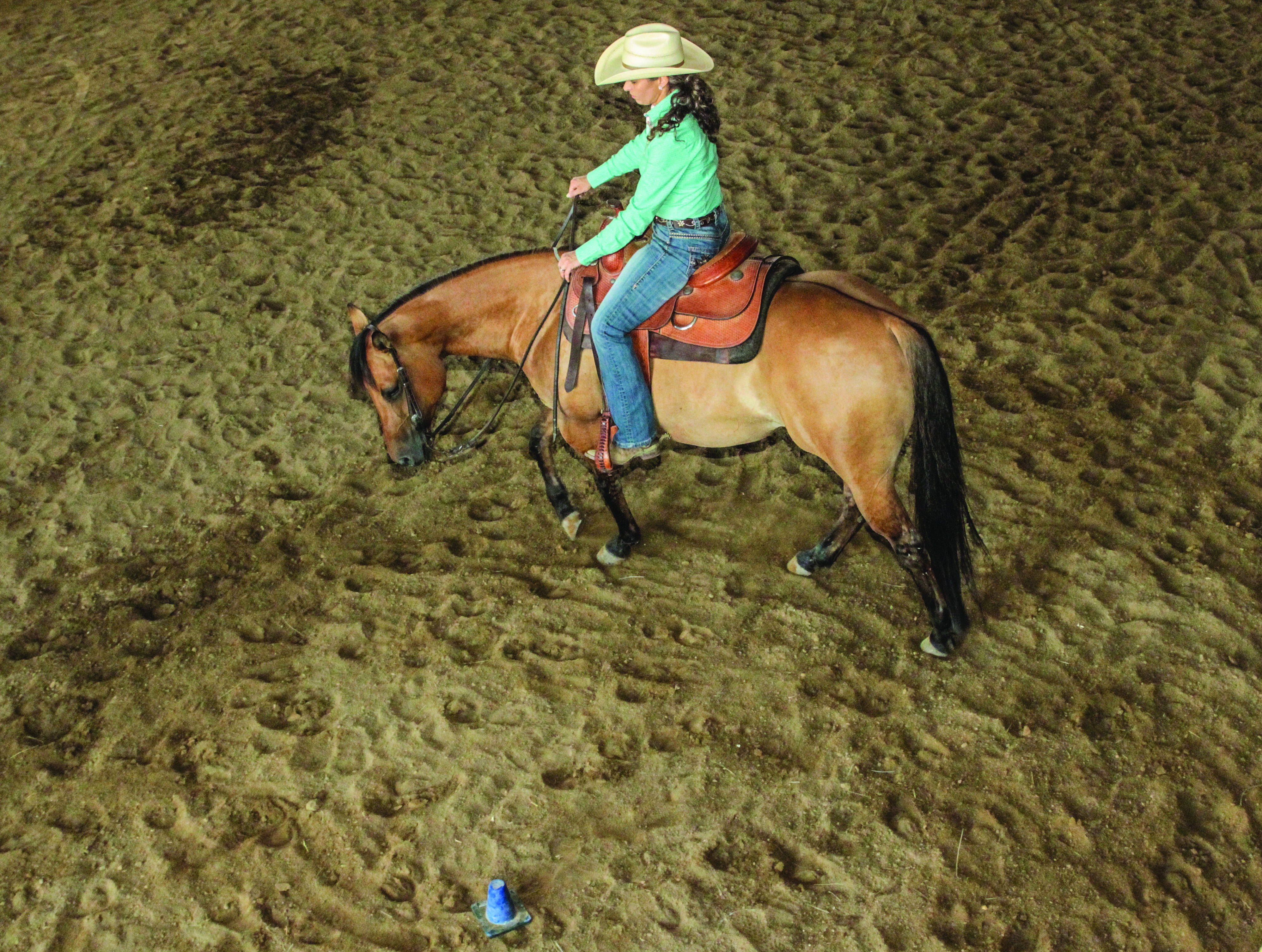
Tanya Corzatt

Tanya Corzatt
Before you begin: Outfit your horse in his usual trail tack. This exercise works well when riding in a snaffle bit and is possible in a shank (curb) bit if your horse understands leverage cues. Place a cone in the middle of the arena as a visual cue. Lead your horse to the arena, close the gate, mount up, and warm up your horse on the rail.
Step 1. Circle to the left. Ask your horse to walk. Riding with two hands, cue your horse to circle left around the cone. Keep the circle small—about 6 feet from the cone for an average-size horse. Make sure he can bend consistently without losing forward motion.
Step 2. Spiral in. To ask your horse to walk around the cone, hover your inside (left) hand above your left knee. Your inside rein tells him which direction to bend. When you apply this rein aid alone, he’ll spiral in, follow his nose, and move closer to the cone.
Step 3. Coordinate leg and rein. Keep even leg pressure on your horse to encourage constant forward motion; don’t apply inside-leg cues to turn his body. Teach him to respond to your rein aids. If you use your inside leg to push out his shoulder instead of drawing it out with the right rein, you’ll cue him for a move similar to a sidepass.
Also, if you use your leg, you’ll be tempted to use less right rein. A flopping right rein will allow him to move his head, and you won’t fix your horse’s balk-related head-tossing. Pressure on both reins not only communicates your request for shoulder movement, but also signals for a steady head position.
Step 4. Spiral out. Increase your distance from the cone by moving your horse’s shoulder to the right. To move just his shoulder out (instead of just his nose), use your right rein to cue him. Imagine the saddle horn is the center of a clock and your horse’s neck crest points toward 12:00. Reach your right hand forward and point it toward 2:00. Look in the direction you want your horse’s shoulder to go. That may feel awkward because you’re used to looking at his head.
Step 5. Release. When you feel your horse move his shoulder out, lower your right hand slightly, but keep it in position. This gives him a release and lets him know he did the right thing. You’ll know he understands the exercise when you pick up your right hand and he doesn’t try to move his head. Instead, he moves his shoulder willingly and independently.
Step 6. Repeat. Circle your horse to the left until he bends well and moves his shoulder on command.
Step 7. Circle to the right. Walk or trot a few laps around the arena, then repeat this circling exercise to the right.
Step 8. Practice. Practice this exercise for a few minutes each time you ride until you feel that your horse fully understands your cues.
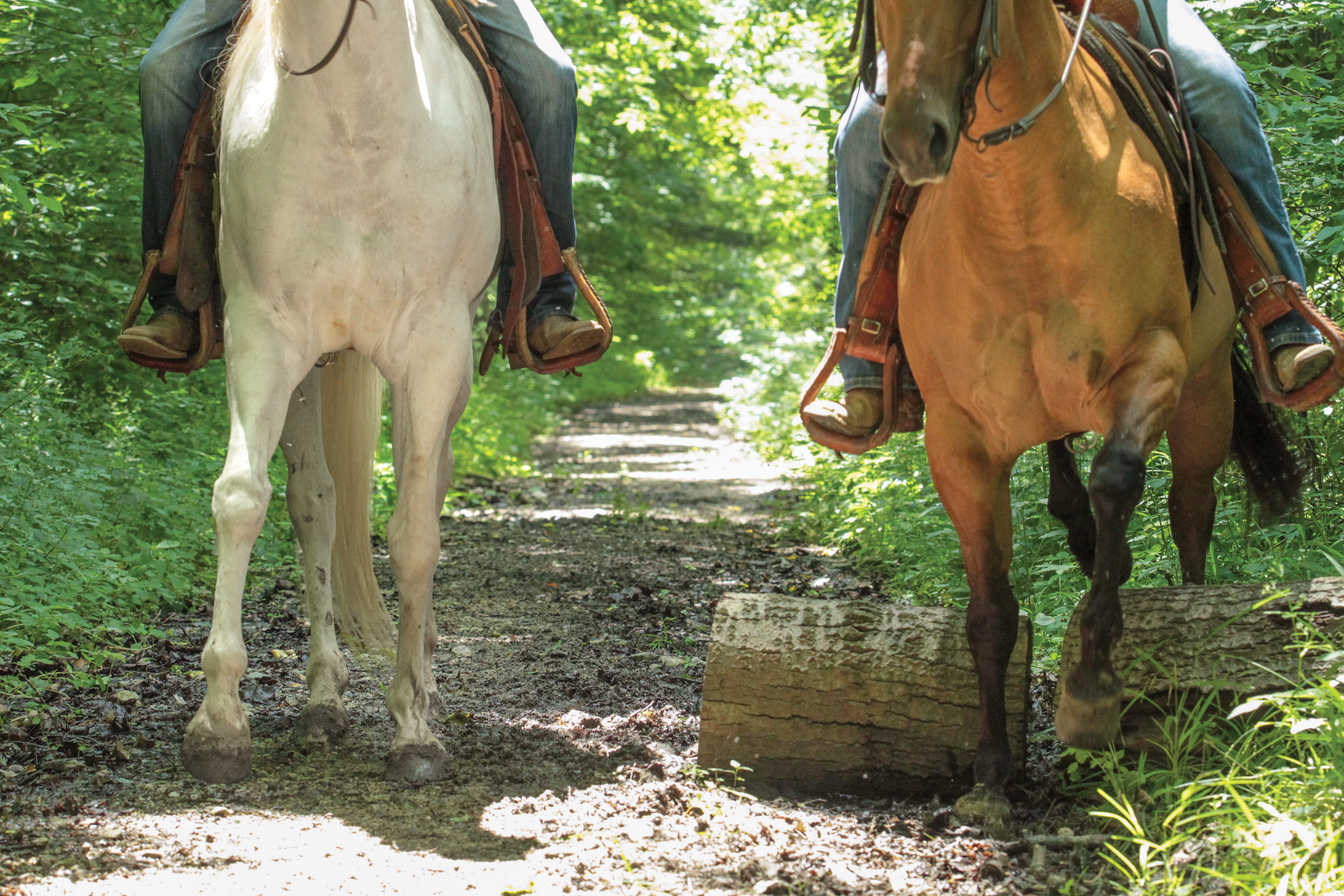
Tanya Corzatt
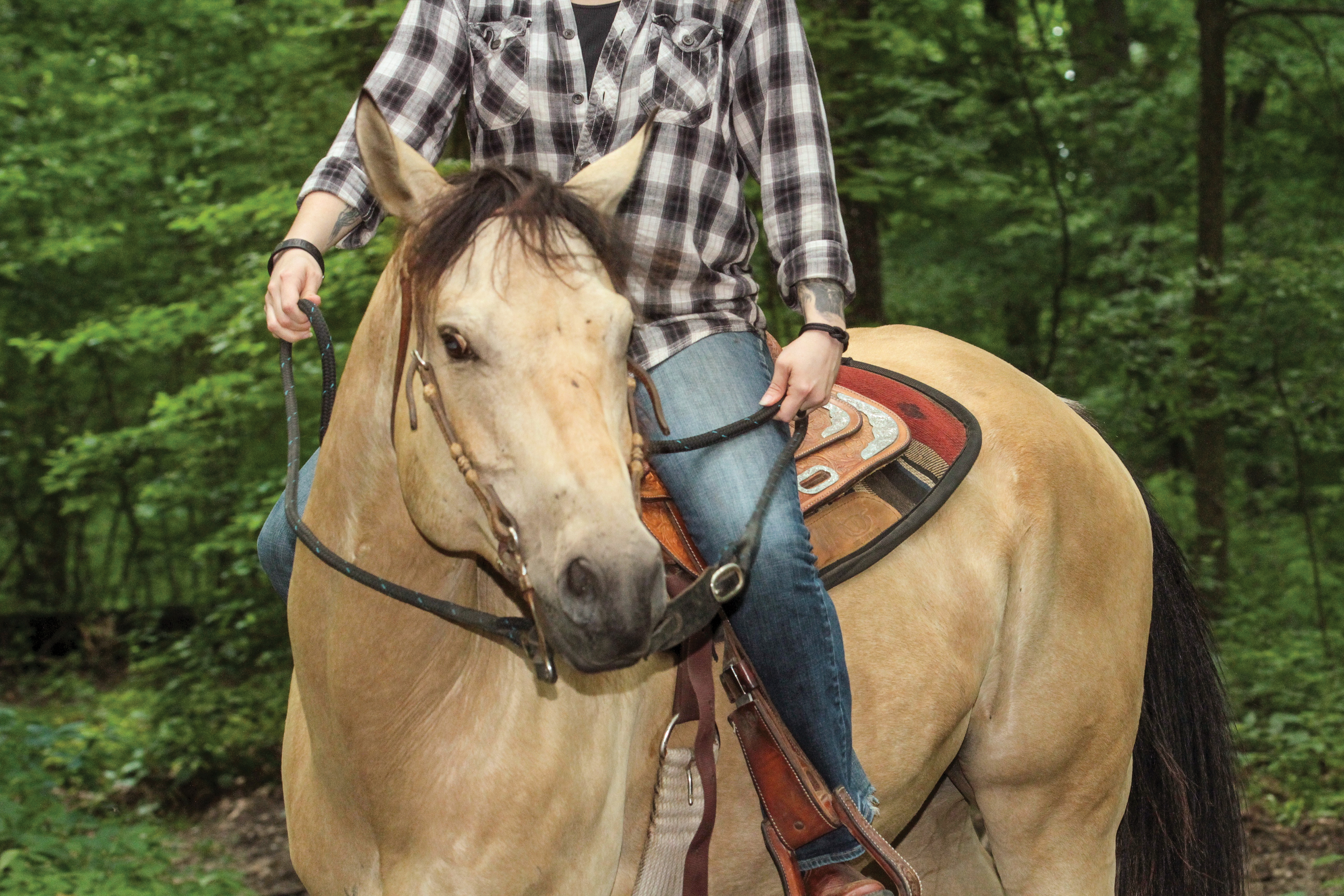
Tanya Corzatt
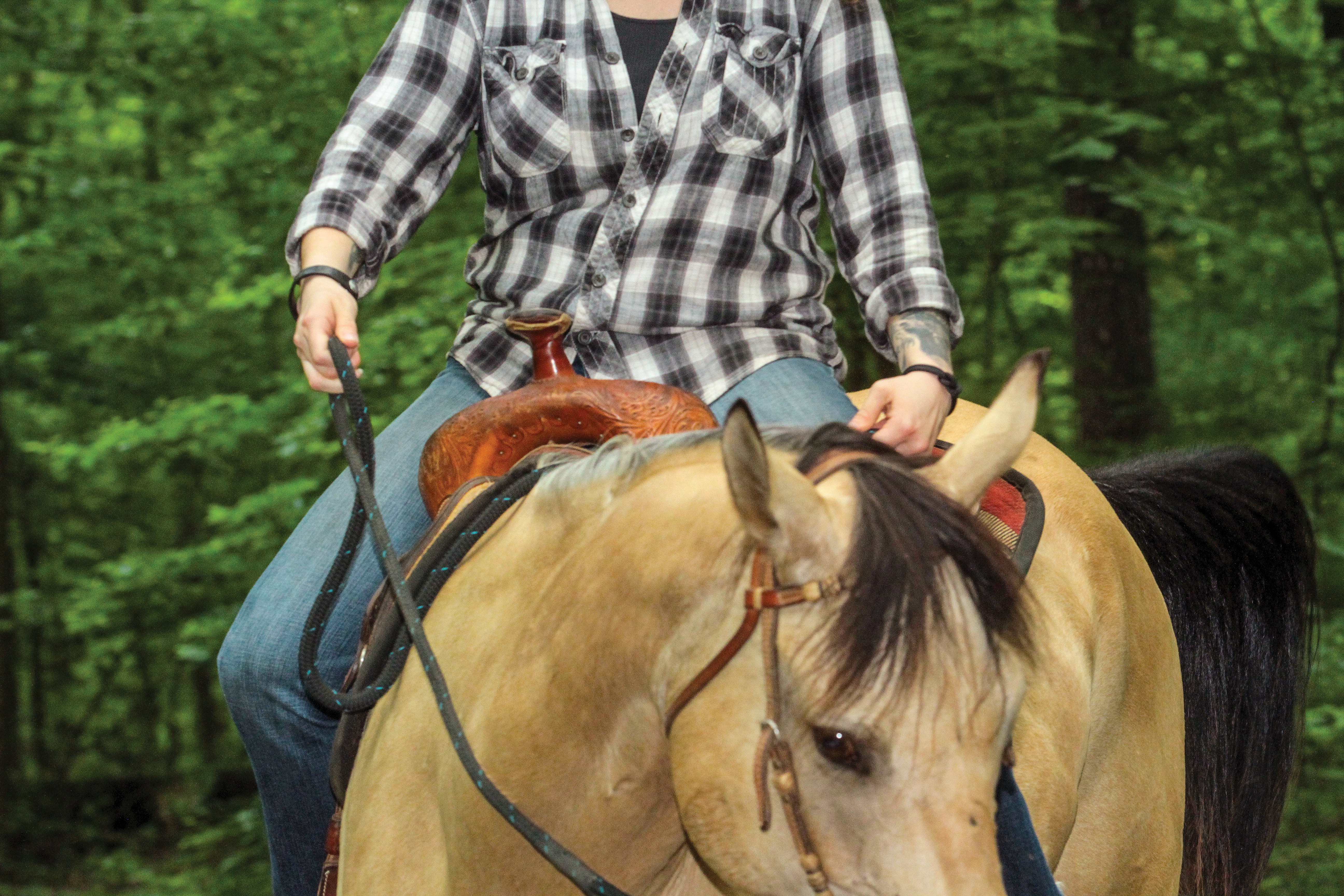
Tanya Corzatt
Hit the Trail
Now you have the control needed to master almost any trail situation. When you apply your shoulder-control exercise, your horse will know how to respond. If your horse willingly goes where you ask on your home trails, you can trust that he’ll step over challenging obstacles on unknown trails. But don’t wait for the unexpected! Practice your ability to cue your horse on every ride, over any obstacle before he balks. Let others in your riding group know your training plan. After some arena guidance, suggest that they participate, too.
Find open, grassy areas or wide areas of level trail to work your horse. Circle him and remind him of his shoulder movements. Ask him to cross logs, go around trees, and walk through mud puddles using your shoulder-control skills to guide him. Walk to the left of a rock when your riding buddies walk to the right.
There are hundreds of chances to choose a more challenging path. Look for opportunities to improve your communication, and make sure your horse is tuning in to your cues.
With consistent repetition, you’ll remind your horse that you have control of almost any situation. When you’re proactive, you’ll prevent an on-trail fight and avoid adding any holes to his training.






